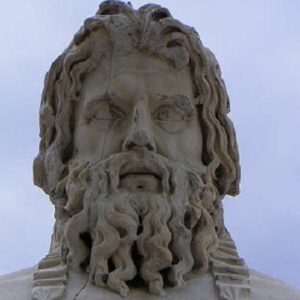Pytheas was a Greek explorer and geographer who lived in the Greek colony of Massalia (modern-day Marseille). In roughly 325 BC, he embarked on a journey to northern Europe, traveling all the way around Great Britain. He was the first to describe Scandinavia, but his description has perished. He is frequently referred to as the world’s first known explorer in the modern sense. Pytheas was the first person to visit the Arctic, polar ice, and Germanic tribes, and is known to have done so. He was born in Massalia and was tasked by merchants in his hometown to find a route to the tin mines of southern Britain, where the Carthaginians controlled the trade. The Greeks sought a reliable access to the tin mines in order to break the monopoly. Pytheas successfully circumnavigated a large chunk of the United Kingdom and chronicled it in his now-lost book. He also described another land called the “Island of Thule” in this work. Thule was sometimes identified as Iceland or Greenland in antiquity, leading to the belief that Pytheas may have traveled as far as Iceland. As an astute astronomer, he was among the first to suggest that the moon influences the tides.
Childhood and Adolescence
Pytheas was born on the south coast of France in the Greek colony of Massalia. It is unknown what year he was born or anything about his family. According to some sources, he was born around 350 BC, while others claim he was born around 380 BC.
Later Years of Pytheas
Pytheas’ voyages are not known to have started in a specific order. Merchants in his native city are thought to have sent him on his voyages to find a route to the tin mines of southern Britain, which supplied that valuable metal to all of Europe and the Mediterranean.
The trade in tin was fully controlled by the Carthaginians (from the city of Carthage in present-day Tunisia), who had closed the Strait of Gibraltar—the exit from the Mediterranean into the Atlantic—to all ships from other nations. The Greeks wanted to break their monopoly by finding an alternative route to the mines.
Pytheas began his voyage during the second half of the 4th century BC. Since the Strait of Gibraltar was blocked, he probably travelled overland or went on his voyage during a time when the Carthaginians were engaged in a war with Syracuse in Sicily (310-306 BC) (310-306 BC). It is not known exactly how, but he successfully made his way to the port of Corbilo at the mouth of the Loire River.
From there he probably followed the European shoreline to the tip of Brittany and sailed from there to Belerium (Land’s End) in Cornwall, the southwestern tip of Britain where the tin mines were located.
He maintained a detailed record of his travels in which he claimed to have explored a large part of Britain on foot. He accurately estimated its circumference at 4,000 miles (6,400 km) (6,400 km). In his accounts he also wrote about how the inhabitants of Belerium extracted tin from the mines and how they engaged in trade.
Continuing his voyage, he set sail from Cornwall and sailed through the Irish Sea between Britain and Ireland to reach the northern tip of Scotland. He may have even reached the mouth of the Vistula River on the Baltic Sea during his travels. “Island of Thule,” Pytheas described a land beyond northern Scotland.
It’s unclear whether Pytheas visited Thule or simply described it based on what he had heard. Based on his descriptions of the land, it is assumed that Thule was probably Norway in the present region of the city of Trondheim, although other locations have also been suggested.
Eventually he sailed back to Britain, and crossed the North Sea to the North Frisian Islands off the coast of Germany. He also went on an exploration of Heligoland, which he named Abalus. Finally, he sailed back to Europe’s coast and returned home.
Major Projects of Pytheas
Pytheas is credited with being the first person to travel to Britain, the Baltic, and the Arctic Circle. In his memoir ‘Periplus,’ which was well-known in antiquity, he described his travels. On his historic voyage, he circumnavigated and visited a large portion of the United Kingdom, estimating its circumference to be 4,000 miles (6,400 km).
He was the first known person to describe the Midnight Sun, as well as the first to link the tides to the moon’s phases. He may have been the only source of information on the North Sea and Western Europe’s subarctic regions in later periods.
Personal History and Legacy
There are no details about his personal life available. Even his death date is shrouded in obscurity. He is thought to have died between 300 and 285 BC.
Estimated Net Worth
The estimated net worth of Pytheas is about $1o million.


